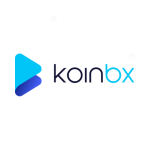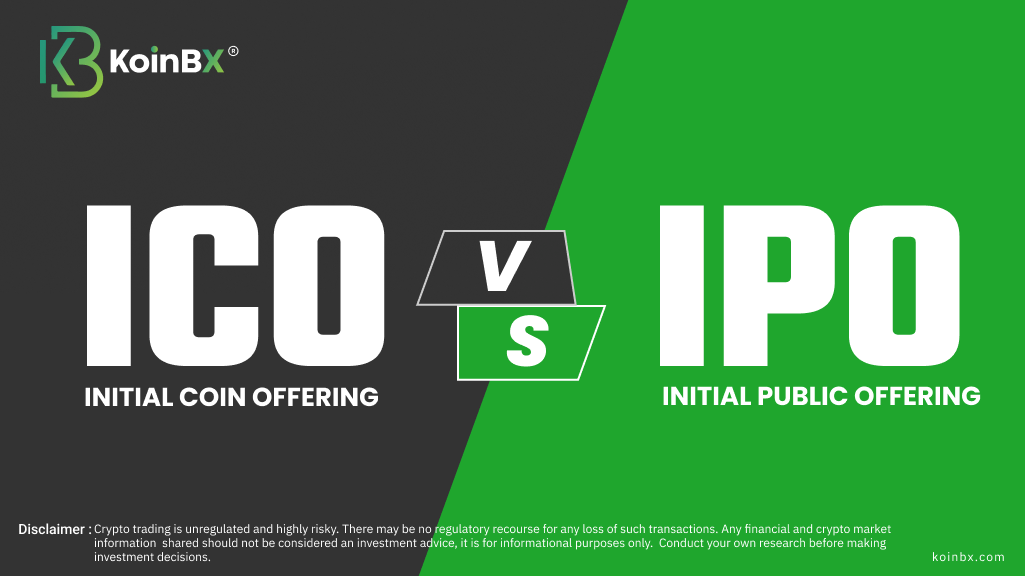Introduction
The rise of the crypto market has introduced us to an array of new terms and processes, from decentralization to altcoins and many more. Among these innovations is the Initial Coin Offering (ICO), a fundraising mechanism that has become synonymous with the crypto boom. However, many still confuse ICOs with the more traditional Initial Public Offering (IPO). While both serve as capital-raising tools, they cater to vastly different markets and operate under different rules. This guide will give the basics of ICOs and IPOs, highlight their differences, and help you understand which might be better suited to your needs.
What is an Initial Coin Offering (ICO)?
An Initial Coin Offering (ICO) is a crowdfunding method primarily used by startups in the crypto and blockchain sectors. In an ICO, a company creates and sells digital tokens or coins to raise funds for its project. Investors typically purchase these tokens using established crypto assets like Bitcoin or Ethereum, though some ICOs also accept fiat currency. ICOs have become popular because they allow startups to bypass traditional funding routes, like venture capital, and directly reach a global pool of investors.
What is an Initial Public Offering (IPO)?
An Initial Public Offering (IPO) is a more traditional fundraising method where a private company sells its shares to the public for the first time. This event transforms the company from a privately held entity into a publicly traded one. The capital raised through an IPO is typically used to expand operations, pay off debt, or fund new projects.
Also Read: What is an Initial Game Offering (IGO)?
Difference between ICO and IPO
When it comes to raising capital, both Initial Public Offerings (IPOs) and Initial Coin Offerings (ICOs) offer exciting opportunities for newly founded businesses. But the key difference lies in what investors get in return for their money.
In an IPO, accredited investors receive equity in the company, meaning they own a piece of the business and gain voting power on company decisions. Essentially, they get a stake in the company’s future and a say in its direction. On the other hand, with an ICO, investors don't get a piece of the company itself. Instead, they receive tokens—digital assets that may give them certain rights or access to services within a blockchain-based project. However, these tokens don't come with voting power or a share of the company’s profits. Here are a few significant differences between IPO vs ICO.
1. Stage
ICOs generally occur early in a project's life cycle, often before the company has a fully developed product or service. This early-stage nature makes ICOs riskier but also offers the potential for higher returns if the project succeeds. Investors are essentially betting on the future success of a concept, not a proven business model. IPOs, on the other hand, typically take place when a company is more established. By the time a company goes public, it usually has a successful product, a steady revenue stream, and a need for long-term capital to fund further growth. The risks are lower compared to ICOs, but so are the potential returns.
2. Regulation
One of the most significant differences between ICOs and IPOs is regulation. ICOs are mostly unregulated, allowing them to operate with fewer restrictions. However, this lack of oversight also makes them more susceptible to scams and fraud. IPOs are heavily regulated by government bodies like the Securities and Exchange Commission (SEC) in the United States. This regulation ensures that companies provide accurate information about their financial health and business prospects, offering a layer of protection to investors. However, it's worth noting that regulation does not eliminate risk, as evidenced by past IPO scams.
3. Conditions for Listing
An ICO can launch without the underlying crypto asset being listed on any exchanges. This means that while investors can purchase tokens during the ICO, they may not be able to trade them immediately if the tokens aren't listed on any exchange. The listing process for ICO tokens can be unpredictable and depends on various factors, including the project's success and market demand. IPOs require that the company's shares be listed on a stock exchange prior to the offering. This listing guarantees that shares can be traded immediately after the IPO, providing liquidity to investors.
4. Recipients (Intermediaries)
ICOs often eliminate the need for intermediaries such as brokers, exchanges, and underwriters, which can make them more efficient and cost-effective. In contrast, IPOs involve multiple intermediaries, including underwriters, brokers, and regulatory bodies. These intermediaries play crucial roles in the IPO process, from pricing the shares to ensuring regulatory compliance.
5. Distribution
The distribution of tokens in an ICO can sometimes be uneven, with "whales" purchasing the majority of the tokens. The lack of regulation in the distribution process can also result in unfair practices, such as pre-sale deals that favor certain investors. IPOs follow a more structured and regulated distribution process. Shares are allocated based on various factors, including investor demand and regulatory requirements.
6. Category of Investors
ICOs are generally open to anyone with an internet connection, making them accessible to a global pool of investors. However, this accessibility comes with risks, as not all investors are aware of the potential pitfalls. Recent trends show that some ICOs are introducing Know Your Customer (KYC) and Anti-Money Laundering (AML) requirements. In contrast, IPOs are typically accessible only to accredited investors who meet specific financial criteria. These criteria are designed to protect less experienced investors from taking on too much risk.
Also Read: Risk and Rewards of Investing In ICOs And IDOs
Final Thoughts
Both Initial Coin Offerings (ICOs) and Initial Public Offerings (IPOs) offer unique opportunities for companies and investors, but they cater to different markets and come with their own sets of challenges. ICOs are innovative and accessible, leveraging blockchain technology to democratize access to capital. However, they often face regulatory uncertainty and higher risks of fraud. On the other hand, IPOs provide established regulatory oversight and access to significant capital but involve extensive compliance and substantial costs.
We may see more regulatory clarity and technological advancements that bridge the gap between ICOs and IPOs as the financial landscape evolves. At the end of the day, both ICOs and IPOs require careful consideration, thorough research, and a clear understanding of the risks and rewards involved.
Download KoinBX Android App | Download KoinBX iOS App
Disclaimer: Any financial and crypto market information shared should not be considered investment advice. It is for informational purposes only. Conduct your own research before making investment decisions. Crypto trading is unregulated and highly risky. There may be no regulatory recourse for any loss of such transactions.






Comments